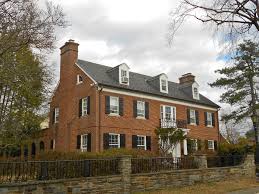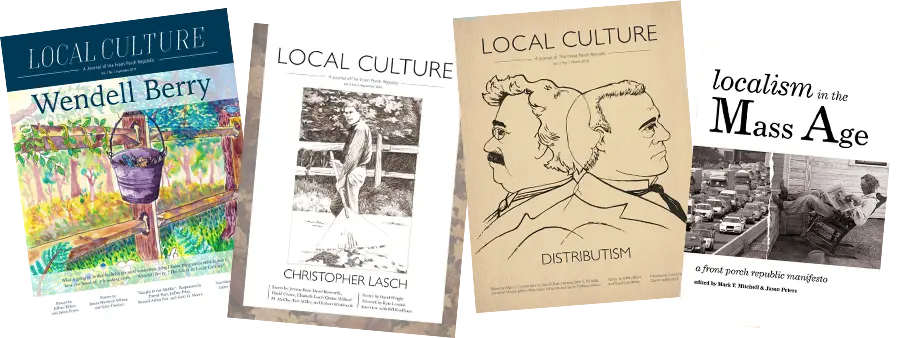When we first bought our house in Baltimore, we sort of knew what we were getting into. The sellers were up front about their work on the home. They had not performed the $200,000 remodel the house probably needed. No, their goal had been to make the house livable, investing enough money and work so that it would be in good shape while still maintaining its affordability. They weren’t looking to price it out of the neighborhood or to pocket a lot of money. And to their credit, they succeeded. When we moved in, we found it both livable and affordable. We’d spent the last several years with almost no money. Livable and affordable were good.
The upside of this remodeling approach, other than the immediate cost to our pocketbook, was that our old lady of a house had much of its original, historic features, which we loved. The recent work hadn’t mercilessly gutted it of its past with its good bones and bits of finery. Like many late 19th century Baltimore row homes, ours was originally built with pocket doors, magnificent trim, wood flooring, brass hardware, transoms, even a tin ceiling in the kitchen. Nearly all of it was still there. We appreciated these features of the home. They gave it a character distinct from the grays and off-whites of Trulia. They also connected us to the past of the place and to a form of architecture that predated modern conveniences like electric lighting, HVAC systems, and fiberglass doors with faux wood grain.
But the difficulties of living in an old house grew on us over time. Most of these original features were painted over. The doors. The hardware. The trim. The transoms. Nearly every wall in the house was an original plaster wall – coated in at least two layers of wallpaper with two coats of paint on top of that. And it wasn’t only the walls that suffered from this treatment. Several years after we moved in, one of our neighbors re-did his roof. He first removed the various materials that had been piled on over the years, tar that had accumulated like layers of geological strata, tracking the ages of the past with the original tin roof at the bottom. Once these were chiseled off, the change in weight was so significant that the cantilevered bedroom on the back of his house rose several inches. Our roof had these same layers, and in time, they too would need to be pulled back, unearthing whatever was underneath.
On a positive note, our home did not have any formstone. This was a line I wasn’t willing to cross. The filmmaker John Waters once described formstone as “the polyester of brick.” You could call it the architectural pinnacle of re-dressing a house while failing to redress its flaws. Formstone makes paint, wallpaper, and layers of tar look tame by comparison. For years, it was proudly produced in the place of its invention – Baltimore.
For those fortunate enough to not know what formstone looks like, it is a fabricated stone, if there can even be such a thing. But it looks so unlike stone as to appear cartoonish, an 8-bit video game version of how stone might look. Marketed as a refresh to a home’s appearance with minimal future upkeep, it promised a one-and-done solution to the aging exterior of a house. The truth, however, is that it is both unsightly and unhelpful. It becomes its own problem. Crumbling, separating from the house, damaging the underlying brick. Naturally, Baltimore widely adopted it as a solution.
Our home, like every place, came with a history. Discerning how to address its accumulated layers of history while working to both value and redress our home’s past was not going to be easy. It would take time and discernment. This is one of the primary challenges of living in an old home and loving it for what it is. On the one hand, you want to enjoy and sustain the continuities that give the house its character, while on the other hand, you want to remove the accumulated deposits and dirt of past years that take away from its long-term beauty, sustainability, and vitality.
Because the painted wallpaper was so ubiquitous when we moved in, one of our earlier projects was the removal of the wallpaper in the dining room. This went surprisingly well, mainly because there was a plane behind the wallpaper that easily dissected from the plaster, especially when using a sharp blade. I worked my way steadily around the walls and the ceiling (yes, the ceiling), surgically exposing the cool, solid plaster beneath with its swirls of yellow and white. As I turned my attention to the south wall of the dining room, I discovered writing taking shape on the exposed plaster, a large, flowing cursive, written with what I supposed to be a carpenter’s pencil. The words unfolded slowly. “The Hon. John Hurst. Our Next Governor. The White Man’s Candidate.”
Baltimore’s history of racism is no secret. It is written not only on the walls of our home, but in the architecture of our city, the patchwork neighborhoods of the decadent and decaying. Suetonius, the Roman historian, documents Caesar Augustus’ boast that he found Rome brick and left it marble. Conversely, Jim Crow found Baltimore brick and left it rubble. Its race-based politics worked themselves out in every area of the city: housing, parks, pools, transportation, education, medical care. The list is long. But redlining, the racialized practice of real estate that undermined Black (and Jewish) communities by labeling them a financial risk, has had, and continues to have, a particularly enduring effect. Over the last decade, whole blocks have been torn down, even whole neighborhoods, because of the impacts of these policies.
It’s one thing though to know the history of a place, to learn about it in classes and books. It is quite another thing to encounter it written on the walls of your home. History becomes the present when you find yourself living in it. A reckoning begins to take place. Questions come to mind that you never had to deal with before, like, what do I do with the racist graffiti on my wall? Do I leave it there as a reminder of the past or do I remove it in hope of the future? I thought about painting over it. I even considered putting wallpaper back up over it so that some unsuspecting homeowner would, perhaps, someday share my experience. But deeper questions sit behind these. What does it mean to truly live here, in this particular place? And what does it look like for a place and its people to truly heal, valuing what we can of the good things of the past while addressing the cheap solutions and layers of paint that veil wounds and ignore needed change?
There were no fingers of a human hand that appeared, spelling out those letters on our dining room wall. But there was still a revelation. My relationship to the past was no longer an intellectual abstraction. I was living in the past’s house – working, eating, sleeping, raising a family. And so long as I lived here, there could be no comfortable separation between myself and this place with its history. I breathed its air, had my hands in its soil, drank from its water. We were becoming one with it. The same with my neighbors. We were, all of us, becoming more and more a part of the here that was built on the before, and it was becoming part of all of us. There was a connectedness, a kind of shared body that arose where we breathed each other’s breath, drank each other’s sweat and tears, and learned to speak each other’s words.
For about ten years now, my family and I have lived in this place, seeking to learn what it means to reside within the walls of this reckoning, wondering whether the hand that wrote those words on the wall may have pronounced some settled doom over us, or whether there remains a hope for a different future. Our continued presence here in this place is a testament that we believe there is such a hope.
But living in this hope requires a re-evaluation of the present, which means dissecting the social layers of past – and present – cheap solutions. This has made our lives become like our home, as we live in an in-between place, caught in the middle of what has been and what is becoming. But I don’t only mean the place between yesterday and tomorrow, the broken past and some hoped-for, less broken future, though this is true. I mean that our lived experience in the city has become one that peels back the present divides that currently shape our city. For most of our time in Baltimore, I studied, trained, and then worked as faculty in an elite university. My peers at work were (and still are) affluent and highly educated. And yet my family and I have chosen to persist in living in a neighborhood whose high school was, because of its dysfunction, featured in an HBO documentary, the kind of place people like us are implicitly expected not to live.
We never set out to make our choice of a home into a political statement. But in a city and country so starkly divided, perhaps it is inevitable that it has turned into one. Our ongoing rejection of the civic status quo has led to more than one instance of disapproval. Among some progressive individuals, I have encountered a sentiment of moral impropriety, such that I, as a white male, shouldn’t be purchasing and living in a piece of property in a black neighborhood. I am just another white person robbing black people of their dignity. And yet, those who exude this sentiment seem to have never meaningfully considered the question, “Where should a white man live in Baltimore?” or they would have condemned themselves also. For in the moral calculus of Progressivism, there is no right answer to this question. Among some conservative individuals, we have sometimes met with disapproval for a failure to consider our own safety or the safety and wellbeing of our children. We are either irresponsible and reckless or something worse, never mind any responsibility we might bear to such places (and the people who live in them) as the one we now call home.
Beyond these moments of disapproval, I have also had experiences of social dissonance that come from living outside expected social and cultural narratives. On one occasion, during a lunch time seminar at work where fellows and faculty took turns presenting research, my firsthand experiences in my neighborhood were summarily dismissed because they were ideologically inconvenient. My colleague’s presentation took place during the surge in the movement to defund police departments around the country, and it was about the experiences of black youth with police. Underlying the presentation was the hypothesis that there could be no such thing as a good interaction between a black youth and a member of the police department. These presentations are designed for feedback, and I eventually spoke up, saying that the assumptions of the presenter did not match with my experience in West Baltimore. I explained that, even though some of my neighbors had personally been mistreated by members of the police department, they called the police far earlier and more often than I did. I also knew I had neighbors that had close relationships with the police department. Our community is constantly asking for more police presence, not less. From a scientific perspective, I pointed out that the hypothesis “there is no such thing as a good interaction between a black youth and the police department” is impossible to prove. Perhaps I had too much hope that my lived experience in West Baltimore or that my academic credentials would mean anything. I was sharply rebuked without any meaningful intellectual response. I’m certain it did not help that I said these things as a white male, though I’m not sure it would have been received even if I were black.
Apparently, my family’s firsthand experiences in Baltimore were of little to no value within my work environment. They were institutionally invalidated. This may be why there is so little regard among my neighbors for the institution. This disregard has been earned, and because of my association with the institution, I am always at risk of carrying it with me. And yet, despite all our differences, among my neighbors we have primarily encountered a gracious welcome, such that they have said, “I may not like [the local institution], but I like you.”
With few exceptions, our neighbors have less judgment for us than elite graduates or county residents. There is, of course, the rare person who will gladly call you names or hold loud conversations on your next-door neighbor’s stoop about the “white people” moving into the neighborhood. But these are the exceptions. Our neighbors are overwhelmingly the kind of regular human beings that make for the very best kind of neighbors. They have their problems, and they are aware that we have ours too. We learn from each other. And together, we’re all trying to find ways to make things just a little bit better for everyone. It’s not a smooth process. We disagree, sometimes strongly. There have been neighborhood scandals and all the drama one might expect. But by and large, we recognize that we are a bunch of imperfect humans, and that’s ok.
The press has recently been filled with a great number of soul-searching articles regarding the question of who we Americans, as a people, really are. I have less answers to this type of national question than I do to the issues that trouble my neighborhood, and these are few, if any. But any answer, I believe, ought to begin in the same place as the answers begin in my own community, by leaning into what it’s like to live alongside each other, rejecting the false choices of our modern world and embracing that we are, all of us, in need of a reckoning.
There is writing on the wall. It calls out the brokenness of our social engineering, the lies of identitarian politics, and the other cheap solutions of the past and present. It demands a choice between continuing to slap on the formstone of sanctioned speech and performative moralism or instead face with nuance and grace the underlying substantive questions that truly matter, such as the nature of what it means to live as humans in a world that increasingly trades humans for machines, understanding for ideology, embodied nature for technological solutions, and genuine human society for relationships of convenience. We must be upfront about the house we live in. Then we can begin to meaningfully change into something better, but this change will not come quickly. It will come like the change in my home – more gradually than we want.
Over the last ten years, our home has slowly begun to transform. It’s still a work in progress and always will be. The wallpaper is mostly gone, along with a hundred years of tar on the roof. And last summer, we addressed significant structural concerns in the back bedroom while also giving it a much-needed new interior. Looking at it from the street though, you wouldn’t notice these changes. Sure, there’s less vacancy in the block than there used to be. But the front of our rowhome looks about the same. There’s a concrete pad where I wish there was a garden. Paint still covers the stonework. But on the inside and in the bones of the house, things are better than they used to be. The writing may still be on the wall, but a different story is being written in our block. Its narrative isn’t guided by policies, research, or ideology, but rather by the slow pace of a place, its people, and their relationships.
Many a Friday night, before the sun is set, a thrumming bass and high-pitched laughter pierce our wall, and the wall’s fading words tremble with its rhythm and beat. The music and laughter remind me of our inescapably shared lives. We have danced together. We have eaten together. We have sat side by side on stoops. We have learned each other’s stories. We have given and received gifts. We have listened. We have debated. And the thrum of this music goes on.
And slowly, in this life together, layers are peeling back. Slowly, restoration and renovation are taking place. Under all the cheap solutions of the past and the present, there’s something good here, something to love, a home to tend.
Image Via: Wikimedia Commons






1 comment
Art Kusserow
Thank you for this sensitive and timely piece, Dr. Hindman. My wife and I have had similar experiences living in the Bloomfield (“Pittsburgh’s Little Italy”) neighborhood for the past 40+ years. Your challenge to focus on improving the life of a local neighborhood is well-founded, granting larger national concerns.
Comments are closed.